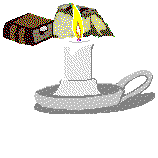The first trans-Atlantic telegraph cable was laid by Isambard Kingdom Brunel's Great Eastern which had been converted from its intended purpose as a passenger liner with the fitting of three huge holds, each capable of carrying over a thousand miles of cable.
It failed after only two weeks' of sporadic operation and the Great Eastern laid another cable (at 2,700 miles long, the longest cable manufactured up to that time) in July 1866. The new cable, manufactured by Telcon consisted of seven strands of copper under three layers of gutta percha and one layer of hemp, the whole covered with eighteen strands of iron wire.
|
Soon afterwards, the Great Eastern returned to the North Atlantic to successfully recover and repair the brocken ends of a previous cable, 680 miles off-shore. This gave the Anglo-American Telegraph Company and Cyrus Fields (1824-1907) two operating trans-Atlantic telegraph cables within the space of a few weeks.
| |
The trans-Atlantic cable was hailed as the engineering marvel of its day. Not only could it transmit messages along the bottom of the ocean between continents but, one of these gutta-percha cables (laid in 1873) was in continuous use until 1953! .
|
Lord Kelvin's Record-Breaking Experiment
The Anglo-American Telegraph Company's new chief engineer, Professor William Thomson (1824-1907, later Lord Kelvin) devised an experiment which was a superb publicity stunt for the telegrapgh company.
Thomson assembled engineers, scientists and reporters in the transmission building on the Irish coast, sending a message to the Newfoundland station requesting them to attach the ends of the two cables together at their end to give him a cable which was 3,200-miles in length, both of its ends in the same room.
Using a simple battery, assembled before the astonished onlookers from a silver ladies thimble, a steel pin and a few drops of lemon juice, and his morse key, he sent a clearly discernible message 3,200 miles down the cable to Newfoundland and back.
|
The feat was made possible by the mirror galvanometer which he had invented and consisted of a tiny mirror mounted on a hair. A microscopic electrical current would cause the hair to twist and the mirror to deflect a light beam directed on it a large distance along a wall or other suitably placed object.
| |
The demonstration inspired James Clerk Maxwell to write a poem:
|
The lamp-light falls on blackened walls
And streams through narrow perforations
The long beam trails o'er pasteboard scales
With slow-decaying oscillations.
Flow, current, flow! Set the quick light-spot flying,
Flow, current, answer light-spot, flashing, quivering, dying . . .
| |
| |
Whilst most early telegraph wires were made of iron, the submarine cables were made of copper because of its lower elecrical resistance, hence better conductivity, over the vast distances involved.
|
| | | Links to Other Pages on This Site
|
| |
| | |
|
| | | Links to Other Sites
|
| |
| | |
Recommend a Book for this Page
Hits on this page since December 6th| Jan | | | | | Feb | | | | | Mar | | | | | Apr | | | | | May | | | | | Jun | | | | | Jul | | |  | | Aug | | |  | | Sep | | |  | | Oct | | |  | | Nov | | | | | Dec | | |  |
current year:  | | previous year:  |
No messages posted on this page Only Members of the Site can post messages in this section. Signing in is easy from our Home Page. DISCLAIMER: Whilst we endeavour to ensure the content of this site is correct, we cannot undertake that information you find here, is, or will remain accurate and complete. We do not warrant that any information contained on this site is fit for any purpose. If you wish to place reliance on any such information you must check its accuracy by some other means before doing so. MEMBERS get aditional features on our pages and will soon be able to interact with the site and add their views and informastion. Sign up, from the Home-Page, is simple and involves typing in your email address and a password of your choice. If you are in any way connected with any location or interested in the subject mentioned on this page and have an hour or two a month to spare, we would welcome you as a local moderator - please email the webmaster by CLICKING HERE. Privacy Policy
|
|






